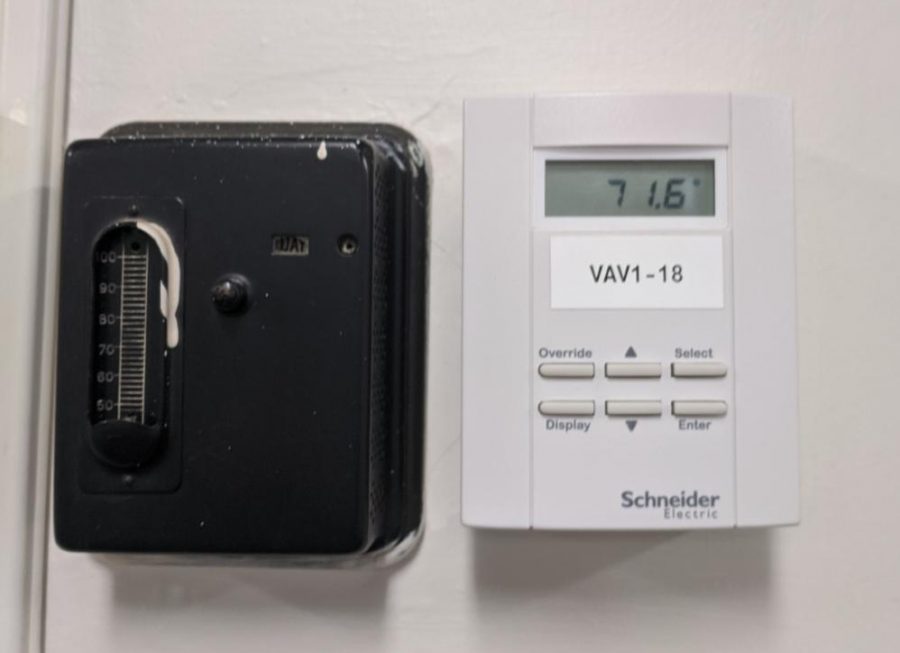Difference in Classroom Temperature
Above is pictured a thermostat from a second-floor English classroom. Many students and teachers believe different classrooms have drastically different temperatures–but are they correct in this belief?
Many people, myself included, have complained about the varying temperatures within the school, even after the grant for school repairs. I’ve given and received advice to “wear layers,” so that you can be prepared for all classroom temperatures. Shouldn’t the extensive repairs to the school actually fix our problems? Instead, it seems there have been mediocre attempts at A/C repairs and bathroom upgrades. Personally, I have been left unsatisfied with both.
It’s been studied that certain temperatures lead to better performance on classwork. The optimal temperature for learning, as determined by a study by Loyola University, is 72 degrees Fahrenheit. I doubt that every room in Boulder High is set, and remains, at 72 degrees. To investigate this further, I acquired a thermometer to measure the temperature of multiple classrooms. I theorize that classrooms with more windows will be colder and those that reside in the middle of the school, surrounded by walls and insulation, will be warmer.
I took my measurements using a thermometer provided by the Science wing, which recorded temperatures in Celsius. After recording the temperatures, I converted them to Fahrenheit, so that my measurements can better be understood by the general population of non-Celcius reading individuals.
| Classroom Number | Wing of the School | Temperature |
| 2253 | Second Floor English | 23 C, 73.4 F |
| 2211 | Second Floor Social Studies | 22.9 C, 73.22 F |
| 2228 | Second Floor Consumer Science | 22.5 C, 72.5 F |
| 1509 | First Floor Science | 23 C, 73.4 F |
| 2606 | Second Floor Science | 22.5 C, 72.5 F |
| 3365 | World Language | 21.5 C, 70.5 F |
| 2271 | Math | 23 C, 73.4 F |
| 3335 | Third Floor English | 22.1 C, 71.78 F |
| Cafeteria | First Floor | 21 C, 69.8 F |
| Library | First Floor | 22.3 C, 72.14 F |
The average temperature within the school is 72.28 degrees Fahrenheit. The range of temperatures comes in at 3.6 degrees, with the highest temperature at 73.4 degrees, and the lowest temperature at 69.8 degrees. The most common temperature recorded was 73.4 degrees Fahrenheit. It appears that, despite the great variance in how students and teachers feel about temperatures, there really isn’t any factual base to those claims.
I would still recommend to wear layers, because in high-stress situations and in classrooms with lots of movement happening, the temperatures could change. It also appears that Boulder High classrooms are well within the range of prime learning temperatures, with an average of 72.28 degrees. Keep yourselves warm (or chilly) out there depending on your current classroom!


